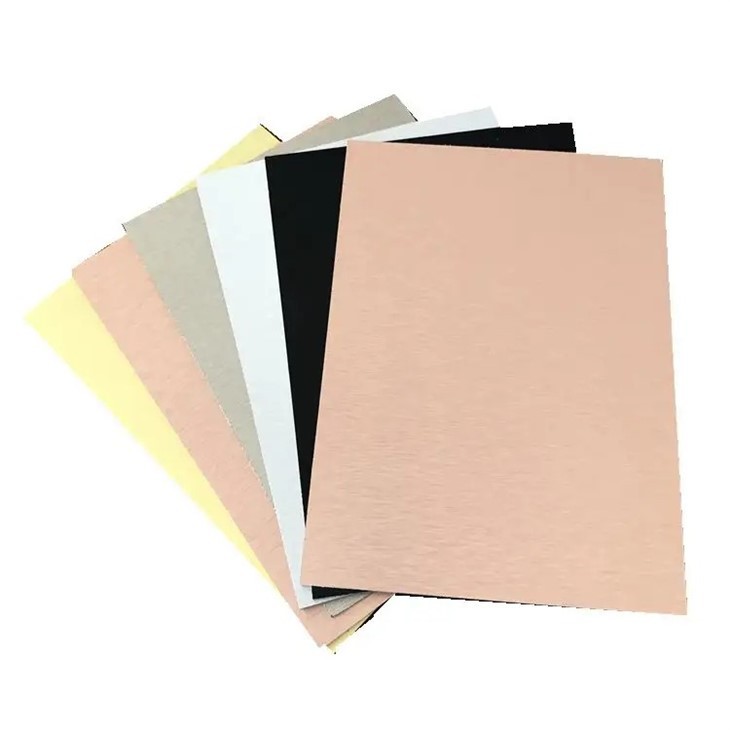As a dedicated supplier of aluminum composite ACM, I understand the crucial role that acoustic absorption performance plays in various applications, from commercial buildings to residential spaces. In this blog post, I will share some insights and strategies on how to enhance the acoustic absorption capabilities of aluminum composite ACM, drawing on my experience in the industry.
Understanding the Basics of Acoustic Absorption
Before delving into the methods of improving acoustic absorption, it's essential to understand what acoustic absorption is and how it works. Acoustic absorption refers to the process by which sound energy is converted into heat energy when it interacts with a material. Materials with high acoustic absorption coefficients can effectively reduce sound reflections and reverberation, creating a more comfortable and acoustically pleasing environment.
Aluminum composite ACM is a popular building material known for its durability, lightweight, and aesthetic appeal. However, its acoustic absorption properties are often limited due to its smooth and hard surface. To improve its acoustic performance, we need to employ various techniques that can increase its ability to absorb sound waves.
Surface Modification
One of the most effective ways to enhance the acoustic absorption of aluminum composite ACM is through surface modification. By altering the surface texture or adding porous materials, we can increase the surface area available for sound absorption and create more opportunities for sound waves to be dissipated.
Texturing the Surface
Texturing the surface of aluminum composite ACM can disrupt the smoothness of the material and increase its ability to scatter and absorb sound waves. There are several methods for texturing the surface, including embossing, sandblasting, and chemical etching. Each method has its own advantages and disadvantages, and the choice of method depends on the desired aesthetic and acoustic performance.
Embossing involves creating a raised pattern on the surface of the ACM using a die or roller. This method can produce a wide range of textures, from subtle patterns to more pronounced designs. Sandblasting, on the other hand, involves propelling abrasive particles at high speed onto the surface of the ACM to create a rough texture. Chemical etching uses a chemical solution to dissolve the surface of the ACM, creating a porous and irregular texture.
Adding Porous Materials
Another way to improve the acoustic absorption of aluminum composite ACM is by adding porous materials to the surface. Porous materials, such as fiberglass, foam, or felt, have a high surface area and can effectively absorb sound waves. These materials can be attached to the surface of the ACM using adhesives or mechanical fasteners.
One popular method of adding porous materials is to use a perforated aluminum composite panel. Perforated panels have small holes or slots that allow sound waves to enter the panel and be absorbed by the porous material behind it. The size and spacing of the perforations can be adjusted to optimize the acoustic performance of the panel.
Core Material Selection
The core material of aluminum composite ACM also plays a significant role in its acoustic absorption performance. The core material provides the structural support for the panel and can affect its ability to absorb sound waves.
Using Acoustic Core Materials
Some core materials are specifically designed to enhance the acoustic performance of aluminum composite ACM. These materials, such as acoustic foam or honeycomb structures, have a high porosity and can effectively absorb sound waves. Acoustic foam is a lightweight and flexible material that can be easily incorporated into the core of the ACM. Honeycomb structures, on the other hand, provide a rigid and stable core that can also improve the acoustic performance of the panel.
Optimizing the Core Thickness
The thickness of the core material can also affect the acoustic absorption performance of aluminum composite ACM. Generally, thicker core materials provide better acoustic absorption than thinner ones. However, increasing the core thickness also increases the weight and cost of the panel. Therefore, it's important to find a balance between acoustic performance and cost when selecting the core thickness.
Installation Techniques
The installation techniques used for aluminum composite ACM can also have a significant impact on its acoustic absorption performance. Proper installation can ensure that the panels are tightly sealed and that there are no gaps or air leaks that can allow sound waves to pass through.


Sealing the Joints
Sealing the joints between the aluminum composite ACM panels is crucial for improving their acoustic performance. Gaps or air leaks between the panels can allow sound waves to pass through and reduce the overall acoustic absorption of the system. To seal the joints, we can use acoustic sealants or gaskets that are specifically designed for this purpose.
Using Acoustic Mounting Systems
In addition to sealing the joints, using acoustic mounting systems can also help to improve the acoustic absorption performance of aluminum composite ACM. Acoustic mounting systems, such as resilient channels or isolation mounts, can reduce the transmission of sound vibrations from the panel to the structure behind it. These systems can be used to mount the panels on walls, ceilings, or floors.
Conclusion
Improving the acoustic absorption performance of aluminum composite ACM is a complex process that requires a combination of surface modification, core material selection, and installation techniques. By understanding the basics of acoustic absorption and implementing these strategies, we can create aluminum composite ACM panels that provide excellent acoustic performance while maintaining their durability, lightweight, and aesthetic appeal.
If you're interested in learning more about our Top Quality ACP/ACM Aluminum Composite Panel Price, Aluminium Composite Material Bendable For Building Project/ Interior Decoration, or Alternative Wall Materials Black Brushed Aluminium Composite Panel, please don't hesitate to contact us. We're always happy to discuss your specific requirements and provide you with the best solutions for your project.
References
- Beranek, Leo L. "Acoustics." American Institute of Physics, 1986.
- Kinsler, Lawrence E., et al. "Fundamentals of Acoustics." John Wiley & Sons, 2000.
- Mechel, Friedrich P. "Acoustics of Ducts and Mufflers." Springer, 1995.